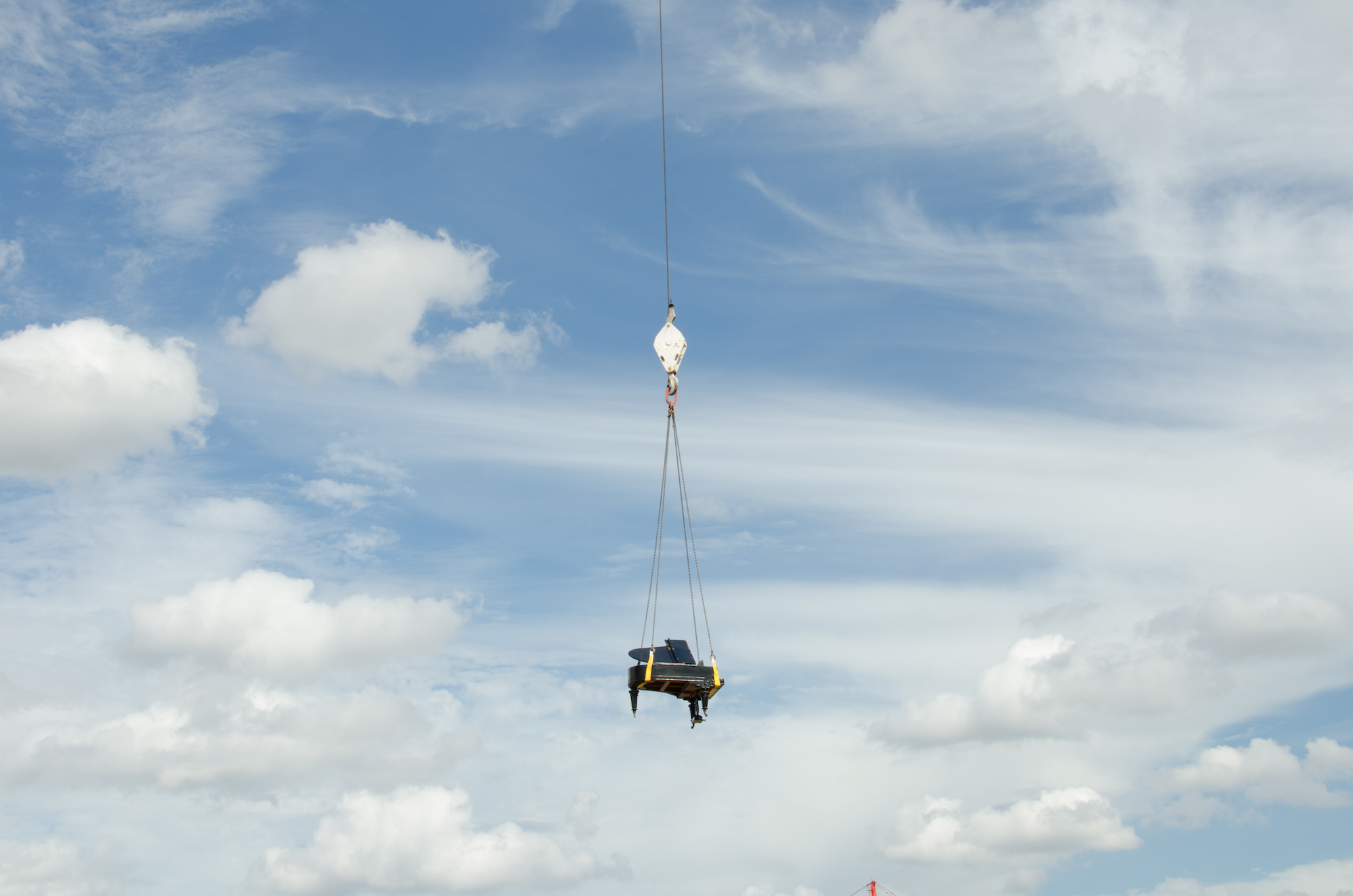Preview of Aeolian Piano
Tuesday February 28th 2017
6pm to 9pm
RIBA 66 Portland Place, London W1B 1AD
Directed by visual artist Catherine Yass; architectural production and development by Francesca Hughes and Gergely Kovács, Hughes Meyer Studio; technical support by Techniker Ltd.
This project was commissioned by White Noise and generously supported by the Arts Council of England, Alison Jacques Gallery, Fayre Share Foundation and Galerie Lelong.
Some twelve years after Robert Barker’s 1787 first formulation of the panorama, it was installed in public imagination in Robert Fulton’s Paris patent for a “Tableau Circulaire”, a habitable machine. This mechanised rotunda in which the audience would stand while the painted horizon on the revolving walls slowly passed by was as much a product for the armchair Grand Tourist of the day, as an anticipation of the moving images to come from the (also initially circular) machines of the very next century: the nascent view from the machine. Being a product of 1780s Edinburgh, the panorama was necessarily an echo of the pansophic ambitions of the Scottish and earlier, European, Enlightenment. The all-encompassing visuality of the 360 degree horizon would present the sum total view of sum total knowledge; nothing would escape its gaze. Hence the 1960s housing of radio and television public broadcasting in the circular Helios of the BBC Television Centre can now, in our multi-device, fragmented yet immersive world of social media, with its sectarian tailoring of news feeds, be seen to be as nostalgic as it was optimistic. Little did we know this was to be the last panorama – The final tour of that all encompassing and seamless loop. The new panoramic gaze of Google Earth belongs to an altogether different paradigm: not only of visuality, but also of the new precariousness of truth, its construction and dissemination.
Aeolian Piano presents a not untroubled eulogy to the broadcasting panorama implicit in John Reith’s directive to centralize the “informing, educating and entertaining” of the nation in which “authentic and impartial news” would win its trust; a trust which might then be used. The looped and therefore both infinite and hermetic structure of the film presents both a visual and a temporal panorama in which, like all panoramas, security is promised, all dissent contained. This loop also echoes the archaeological loop that ties the building in construction to that in demolition via the shared figure of the ruin. The same machines, the (now red) sentinel-like cranes, which first built the Helios and here again are reconfiguring it for private purpose, are also the machines which write the film, moving steel girder, camera and grand piano with equal indifference. Under their tenure the silhouette of the grand piano, both physically and representationally adrift, is effectively voided of its weighty symbolism of high Culture. This symbolically vacated piano becomes a trope: the architectural cut that peels away the façade; the cursor that dumbly tracks its own passage across the sky; the re-embodied eye that looks back at the crane from which it hangs, registering the panorama of the city beyond. But when raised in the wind, this recording cursor is given voice and broadcasts its own last song: and its words have wings.
